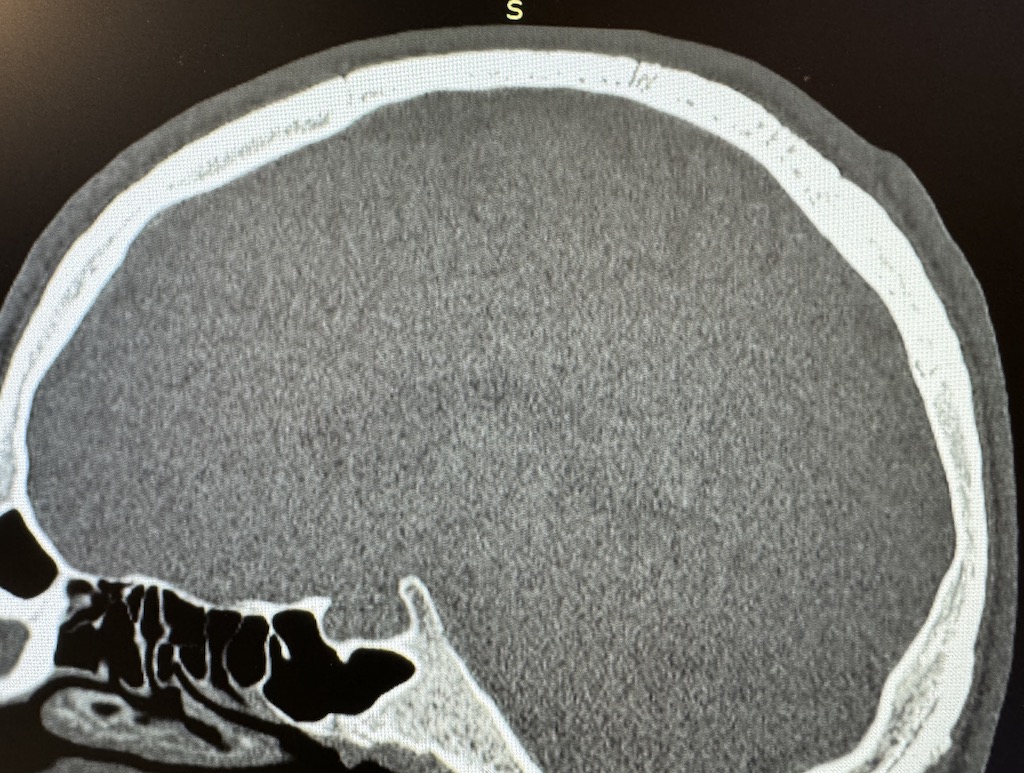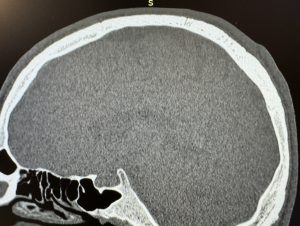Background: There are a variety of raised bony skull areas that present aesthetic deformities which patients request to be reduced. One of the most common is the midline sagittal ridge. While it could occur anywhere along the length of the sagittal suture, and may even involve the entire length of the suture, but most commonly it is the posterior part of the ridge that can be excessively raised. While a prominent sagittal ridge can occur in any gender it is no surprise that is a more common concern in men that have very short hair or a shaved head. (I have yet to see a female for sagittal ridge reduction)
The most important question in considering sagittal ridge reduction is can it be safely done. In other words what is the thickness of the ridge and how much can be removed. While all sagittal ridges I have seen are because the sagittal suture is thickened, and the ridge is always thicker than the parasagittal skull areas at its sides, it is still important to know how much of the ridge in millimeters can be reduced. This can be determined by the thickness of the outer cortical layer and its thickness down to the diploic space. As a general rule if at least 4mms of the ridge can be removed the surgery will usually be worthwhile.
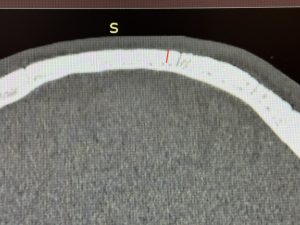
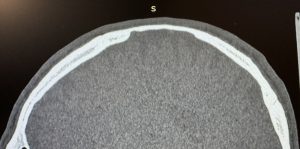
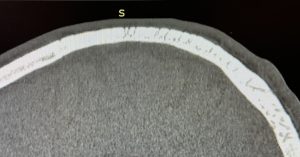
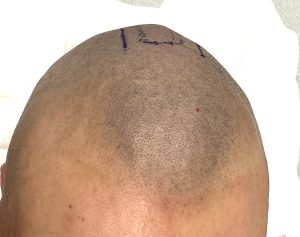
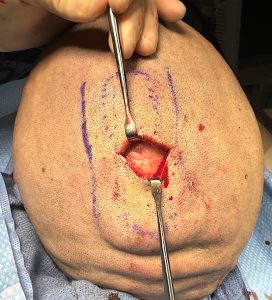

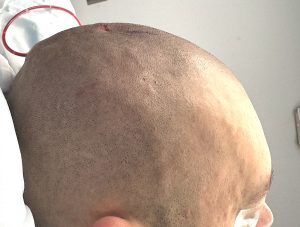
Key Points:
) A preoperative 2D CT scan is a good preoperative evaluation of the potential success of sagittal ridge skull reduction surgery.
2) The vertical lines seen in the CT scan is the irregularly coursing fibrous tissue of the sagittal suture line.
3) In a sagittal ridge of at least 8cms length the small pependicular incision should be placed at its midpoint so the full length can equally be reached for reduction.
Dr. Barry Eppley
World-Renowned Plastic Surgeon

